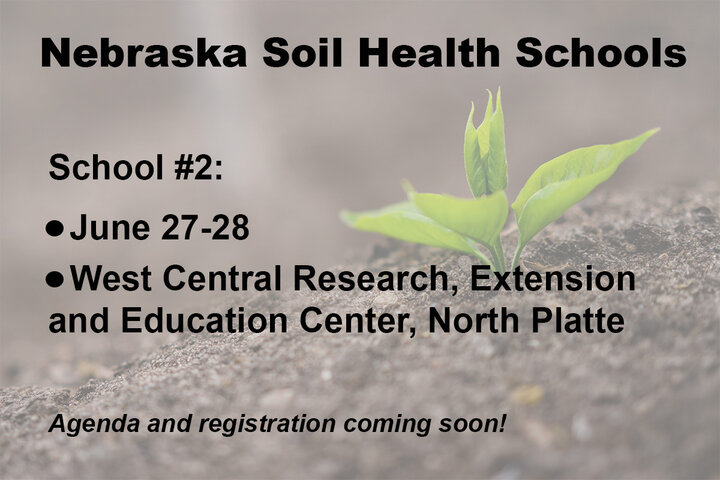Well over 60 area farmers, ranchers, agronomists and agency representatives filled Bridgeport’s Prairie Winds Community Center to learn about soil health at the first installment of three Nebraska Soil Health School events taking place this year.
“Soil health is defined as the continued capacity of the soil to function as a vital living ecosystem that sustains plants, animals and humans,” said Aaron Hird, USDA Natural Resources Conservation Service (NRCS) state soil health specialist.

On March 2, the University of Nebraska-Lincoln (UNL) hosted the Nebraska Soil Health School, sponsored by the USDA NRCS. Nebraska Soil Health School Lead Coordinator Bijesh Maharjan, UNL associate professor and extension specialist, welcomed the audience and introduced the keynote speaker, Dr. Jerry Hatfield, retired director of the USDA Agricultural Research Service (ARS) National Laboratory for Agriculture and the Environment. Hatfield began the program by addressing soil health impacts on water, nutrients and farm profitability.
“We should continue to evaluate and implement practices that increase the value of our soils and create resilience in our cropping systems,” he said. “Opportunity exists for agriculture to meet the demands of the future through our ability to be innovators and revolutionaries.”
The focus of the Soil Health Schools is to offer soil health education while connecting farmers, consultants, educators, researchers and NRCS employees. The attendees heard from Aaron Daigh, UNL associate professor, Michael Kaiser, UNL assistant professor, and Carolina Córdova, UNL assistant professor and extension specialist on fundamental soil health physics, chemistry and biology.


After a brisket lunch, Hird addressed the group by focusing on regenerating soil structure and the soil ecosystem.
“It’s simple — supporting biological activity to build soil structure expands soil function and boosts soil productivity,” he said. “Ninety percent of soil functions are influenced by the organisms living there, which are impacted by management.”
Hird and colleague Elizabeth Gray, USDA NRCS assistant soil health specialist, gave demonstrations using monoliths and soils to compare aggregate stability and much more between no-till and conventional management practices. Gray also lead the group through hands-on activities to identify soil color with the Munsell color chart.

In the afternoon, the group heard from UNL extension educators, researchers and specialists on soil health management practices — no-till, manure, cover crops and livestock integration.
Presenters and industry representatives interacted throughout the day to answer questions and spark discussion around soil health in the Panhandle.
“The (school was) very informative and exceeded my expectations,” an attending farmer said of the event. “It helped to create a story for tangible benefits. The water evaporation and soil holding examples were some of the best I’ve seen.”
The second Nebraska Soil Health School will be a two-day event on Tuesday, June 27 and and Wednesday, June 28 at the West Central Research, Extension and Education Center in North Platte, Nebraska. An agenda and registration announcement will be coming soon.

